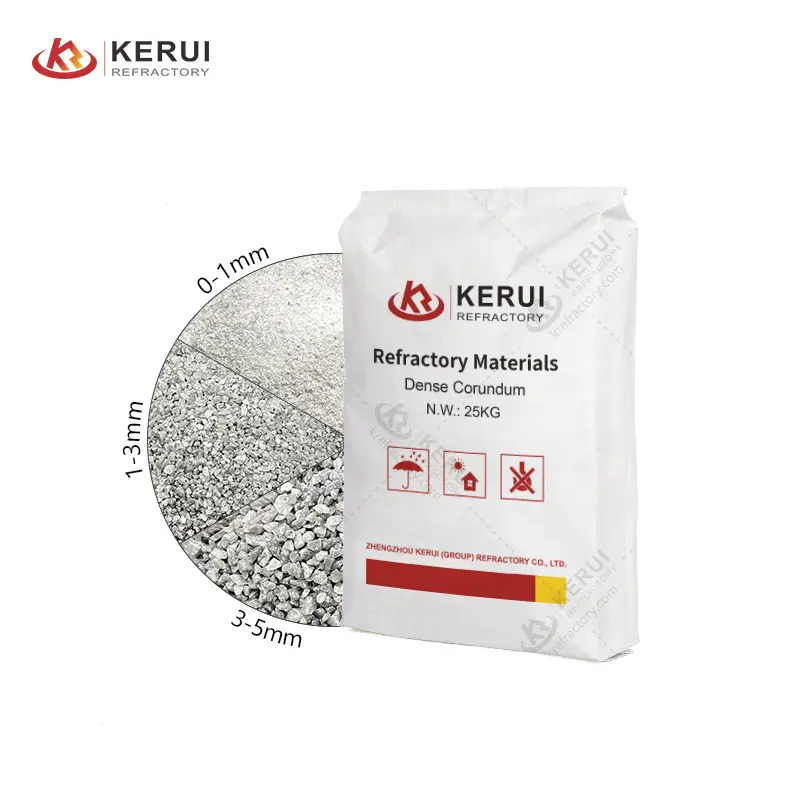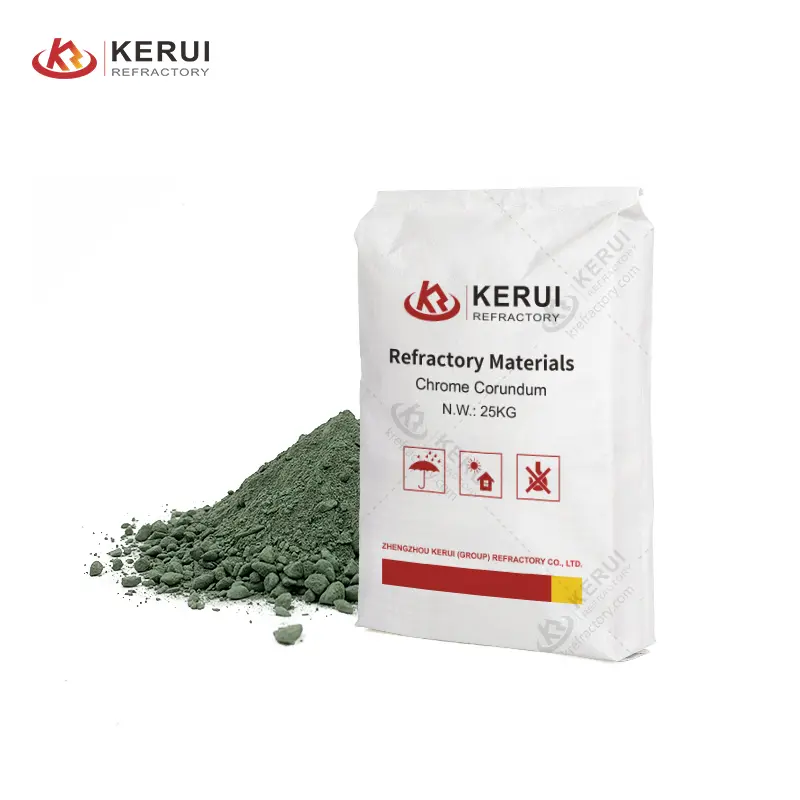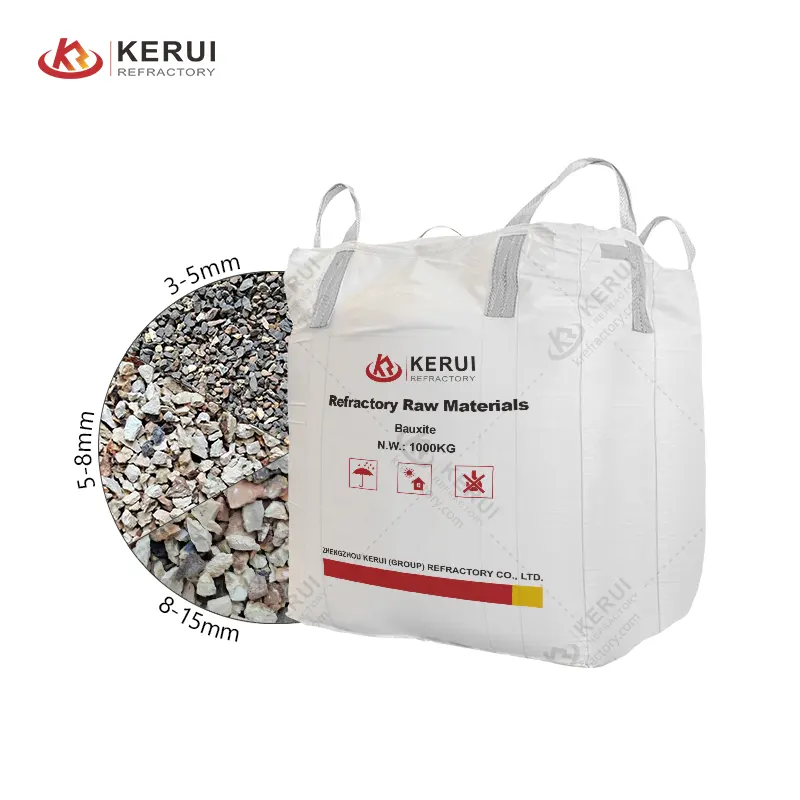Tabular corundum is named because its crystal structure is tabular α-Al2O3. It is formed by sintering industrial alumina powder at a high temperature of 1800℃-1900℃, which is different from the process of fused corundum. Tabular corundum is a sintered corundum crystal with complete shrinkage, low impurity content, small pores, low refiring shrinkage, good thermal shock stability, high temperature corrosion resistance, and good creep resistance.
Technical Data Sheet of Kerui Tabular Corundum
| Test items | Experimental data |
| Main component | α-Al2O3 |
| Mohs hardness | 9.0 |
| Application temperature | 1800℃ |
| Melting point | 2050℃ |
| Al2O3 content | ≥99.2% |
| K2O + Na2O | ≤0.40% |
| SiO2 content | ≤0.10% |
| Density (specific gravity) | ≥3.5g/cm³ |
| Apparent porosity | ≤5.0% |
| Water absorption | ≤1.5% |
| Grain size range | 0-1mm, 1-3mm, 3-5mm, 5-8mm, 8-12mm |
Application of Kerui Tabular Corundum
Tabular corundum has the general performance advantages of fused corundum, and has less impurities, stable raw material quality, mature technology, and tabular corundum has more advantages in all aspects of performance and more reliable quality. Tabular corundum can be used in many fields such as iron and steel metallurgy, casting, glass, ceramics, chemical industry, electronics, etc., as a high-grade refractory material.
Tabular alumina is mainly used in refractory materials for castables and refractory high-alumina bricks in the steel-making and iron-making industries. , hot blast stove exchanger, etc., with the outstanding advantages of high temperature chemical corrosion resistance, thermal shock resistance, outstanding wear resistance and good thermal conductivity.
Product Advantages of Kerui Tabular Corundum
- No reducing agent is added, and other substances will not contaminate the product during the process;
- High temperature resistance, the service temperature can reach 1800℃, it is an excellent ultra-high temperature refractory material;
- Good hardness and wear resistance, Mohs hardness of 9.0, can be used as a refractory material with high wear resistance requirements;
- It has good thermal shock resistance and high temperature creep resistance, and can be widely used as refractory castable or refractory brick;
- Tabular corundum is well developed, shrinks completely, and has low water absorption;
- Good corrosion resistance, excellent thermochemical stability at high temperature, corrosion resistance of molten iron and molten steel;
- The raw materials are stable, the process is easy to control, and the product quality is stable.
Production Process of Kerui Tabular Corundum
The production process of tabular corundum is similar to the sintering process of powder metallurgy. High-purity industrial alumina powder is used as raw material. After further grinding, balling and drying processes, the temperature is rapidly increased in a shaft kiln above 1800 °C. Sintered. The α-Al2O3 crystal formed by sintering is more fully developed, with a flaky crystal structure, compact shrinkage, excellent performance and stable quality.











